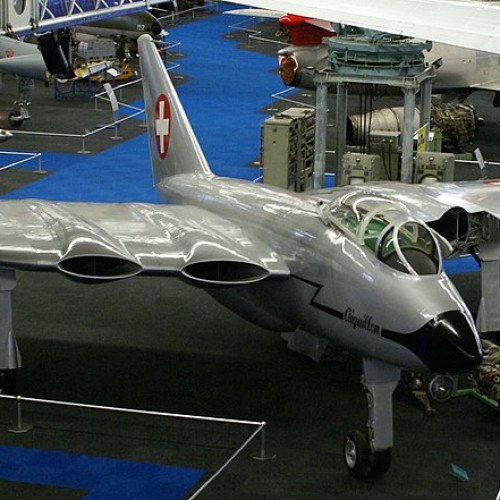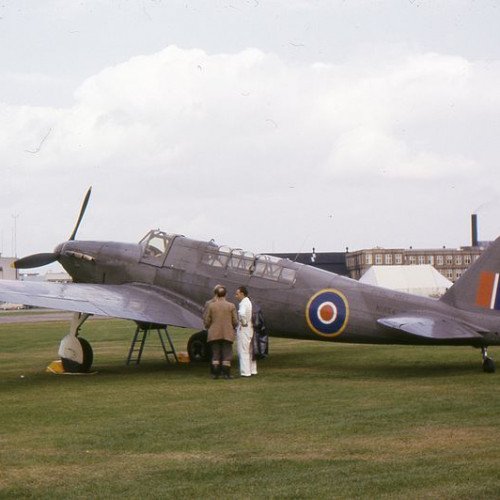EFW N-20 vs Fairey Fulmar

EFW N-20
The EFW N-20 Aiguillon (in English: "Stinger") was Switzerland's first indigenous jet fighter aircraft. The Swiss Federal Aircraft Factory developed a design for a four-engined swept winged fighter following the end of the Second World War. During the test programme an unpowered glider was built and flown. A turbojet powered test aircraft, known as the Arbalète ("Crossbow"), also flew. The N-20 design was not produced. Both the single Aiguillon and Arbalète airframes survive and are on public display at the Flieger-Flab-Museum, Dübendorf; the glider test aircraft was destroyed in an accident.
Statistics for this Xoptio

Fairey Fulmar
The Fairey Fulmar was a British carrier-borne reconnaissance aircraft/fighter aircraft developed and manufactured by aircraft company Fairey Aviation. It was named after the northern fulmar, a seabird native to the British Isles. The Fulmar served with the Royal Navy's Fleet Air Arm (FAA) during the Second World War. The design of the Fulmar was based on that of the earlier Fairey P.4/34, a land-based fighter developed during 1936 as a replacement for the Fairey Battle light bomber. Fairey had redesigned the aircraft as a navalised observation/fighter aircraft to satisfy the requirements of Specification O.8/38, for which it was selected. Although its performance (like that of its Battle antecedent) was unspectacular, the Fulmar was a reliable, sturdy aircraft with long range and an effective armament of eight machine guns; the type could also be put into production relatively quickly. On 4 January 1940, the first production aircraft made its first flight and delivery commenced shortly thereafter, while production of an improved model, the Fulmar Mk II, started during January 1941. Fairey produced a total of 600 Fulmars at its Stockport factory between January 1940 and December 1942. During July 1940, No. 806 Squadron became the first FAA squadron to received the Fulmar. It participated in the pursuit and sinking of the battleship German battleship Bismarck, having acted as a spotter for the chasing fleet. The Fulmar was heavily used in the North African Campaign, flying convoy protection patrols to and from the island of Malta, and providing air cover for Fairey Swordfish torpedo bombers during attacks such as the Battle of Taranto and the Battle of Cape Matapan. By autumn 1940, it had been recorded as having shot down ten Italian bombers and six enemy fighters. The Fulmar was also deployed to the Far East, where it proved largely incapable of matching the Japanese-built Mitsubishi A6M Zero. During the later stages of the conflict, it was relegated from the fighter role by single-seat aircraft such as the British-built Supermarine Seafire and the American-built Grumman Martlet fighters. While continuing service as a trainer and reconnaissance aircraft for a time, the Fulmar was withdrawn from front line service in February 1945.